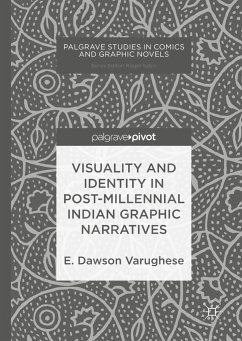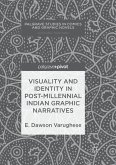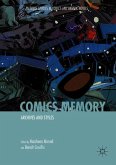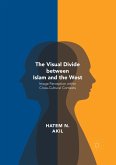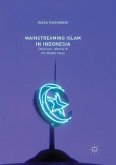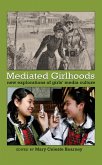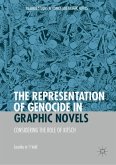This book investigates the intersection of Indian society, the encoding of post-millennial modernity and 'ways of seeing' through the medium of Indian graphic narratives. If seeing in Indian cultures is a mode of knowing then what might we decode and know from the Indian graphic narratives examined here? The book posits that the 'seeing' of post-millennial Indian graphic narratives revolves around a visuality of the inauspicious, complemented by narratives of the same. Examining both form and content across nine Indian, post-millennial graphic narratives, this book will appeal to those working in South Asian visual studies, cultural studies and comics-graphic novel studies more broadly.
"Varughese's original and thought-provoking methodological breakthroughs are particularly evident in her comparisons of post-millennial IGNs with the Nayi Kahani (New Story) movement of post-independence India. ... The book is therefore a welcome addition to the increasingly vibrant practice of 'provincializing cultural studies' ... in the context of contemporary South Asia." (Shailendra Singh, Journal of Postcolonial Writing, July 7, 2020)
"Visuality and Identity in Post-Millennial Indian Graphic Narratives (2017) is a significant contribution to the existing corpus of criticism in the realm of South Asian Visual Studies. ... Exploring the inauspicious in graphic narratives in regional languages will be an interesting possibility for researchers. The book is elegantly written and the author's treatment ofthe subject is critical and balanced. ... this book is really a useful addition to graphic criticism." (Rajesh V. Nair, Journal of Graphic Novels and Comics, September 18, 2019)
"Varughese's well-written account of the intersections of visuality and Indian culture is firmly anchored in earlier theoretical work and points to interesting new directions for further study." (Manasvini Rajan, Contemporary South Asia, Vol. 26 (4), 2018)
"This book will be extremely useful for scholars who are interested in the evolution of the graphic narrative as a genre, especially in the Indian context. Visuality and Identity in Post-Millennial Indian Graphic Narratives will be a good fit in undergraduate and graduate level courses that explore the ways in which literary form and content evolve and influence each other." (Turni Chakrabarti, South Asian Review, Vol. 39 (1-2), 2018)
"Visuality and Identity in Post-Millennial Indian Graphic Narratives is atimely addition to scholarship of the emergence of the sub-genre of the Indian graphic novel. ... it provides a cogent introduction to the graphic novels in view and a detailed analysisof the ways in which stories of horror, violence and trauma ... ." (Simon Grennan, Journal of Graphic Novels and Comicsm, June, 2018)
"The book, in adopting a methodology of close critical reading, turns out to be a splendid example of suturing a verbal/visual anatomy of images, panels, frames, pages, which are integral components of a graphic narrative. ... target-reader is possibly the academic/critic, mature reader/enthusiast of graphic novels." (Varsha Singh, International Journal of Comic Art, Vol. 20 (2), 2018)
"Visuality and Identity in Post-Millennial Indian Graphic Narratives (2017) is a significant contribution to the existing corpus of criticism in the realm of South Asian Visual Studies. ... Exploring the inauspicious in graphic narratives in regional languages will be an interesting possibility for researchers. The book is elegantly written and the author's treatment ofthe subject is critical and balanced. ... this book is really a useful addition to graphic criticism." (Rajesh V. Nair, Journal of Graphic Novels and Comics, September 18, 2019)
"Varughese's well-written account of the intersections of visuality and Indian culture is firmly anchored in earlier theoretical work and points to interesting new directions for further study." (Manasvini Rajan, Contemporary South Asia, Vol. 26 (4), 2018)
"This book will be extremely useful for scholars who are interested in the evolution of the graphic narrative as a genre, especially in the Indian context. Visuality and Identity in Post-Millennial Indian Graphic Narratives will be a good fit in undergraduate and graduate level courses that explore the ways in which literary form and content evolve and influence each other." (Turni Chakrabarti, South Asian Review, Vol. 39 (1-2), 2018)
"Visuality and Identity in Post-Millennial Indian Graphic Narratives is atimely addition to scholarship of the emergence of the sub-genre of the Indian graphic novel. ... it provides a cogent introduction to the graphic novels in view and a detailed analysisof the ways in which stories of horror, violence and trauma ... ." (Simon Grennan, Journal of Graphic Novels and Comicsm, June, 2018)
"The book, in adopting a methodology of close critical reading, turns out to be a splendid example of suturing a verbal/visual anatomy of images, panels, frames, pages, which are integral components of a graphic narrative. ... target-reader is possibly the academic/critic, mature reader/enthusiast of graphic novels." (Varsha Singh, International Journal of Comic Art, Vol. 20 (2), 2018)
